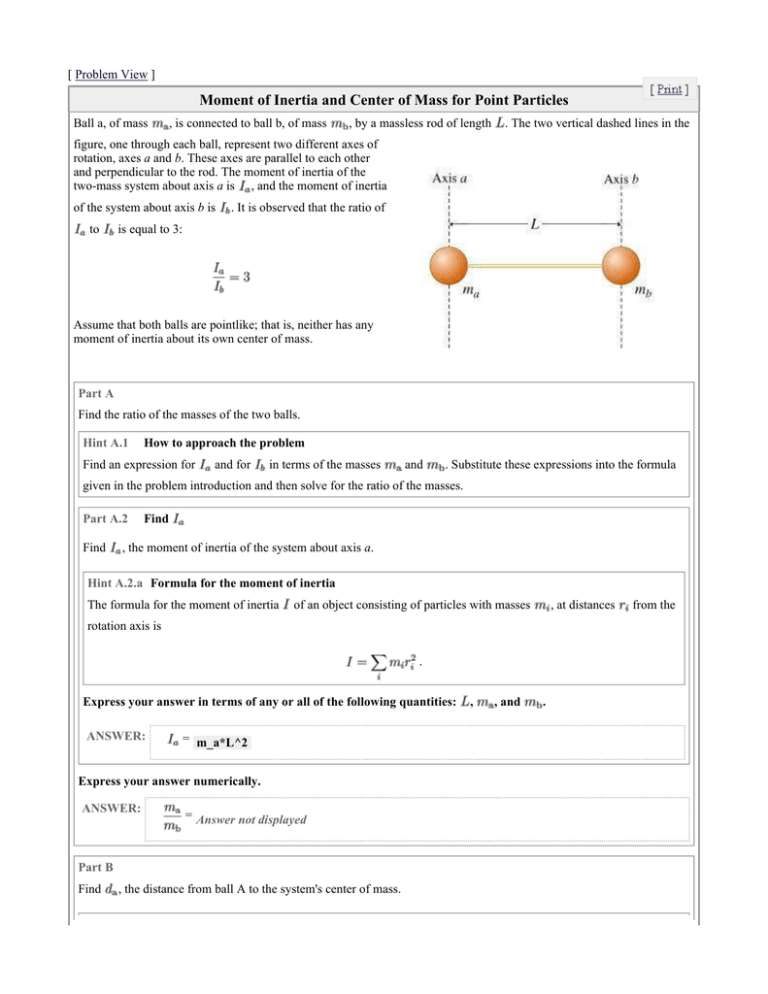Moment of Inertia and Center of Mass for Point Particles
advertisement

[ Problem View ] Moment of Inertia and Center of Mass for Point Particles Ball a, of mass , is connected to ball b, of mass , by a massless rod of length . The two vertical dashed lines in the figure, one through each ball, represent two different axes of rotation, axes a and b. These axes are parallel to each other and perpendicular to the rod. The moment of inertia of the two-mass system about axis a is , and the moment of inertia of the system about axis b is to . It is observed that the ratio of is equal to 3: Assume that both balls are pointlike; that is, neither has any moment of inertia about its own center of mass. Part A Find the ratio of the masses of the two balls. Hint A.1 How to approach the problem Find an expression for and for in terms of the masses and . Substitute these expressions into the formula given in the problem introduction and then solve for the ratio of the masses. Part A.2 Find Find , the moment of inertia of the system about axis a. Hint A.2.a Formula for the moment of inertia The formula for the moment of inertia of an object consisting of particles with masses , at distances rotation axis is . Express your answer in terms of any or all of the following quantities: ANSWER: = m_a*L^2 Express your answer numerically. ANSWER: = Answer not displayed Part B Find , the distance from ball A to the system's center of mass. , , and . from the Hint B.1 To find How to approach the problem , compute the position of the center of mass of the system, using a coordinate system in which ball a is at the origin. In these coordinates, ball a is at distance zero from the origin, ball b is at distance center of mass is at distance from the origin, and the from the origin. Using these values in the equation for center of mass, you obtain . Use the result from Part A to eliminate Part B.2 Find What is in terms of ANSWER: from this equation and obtain in terms of ? = Answer not displayed Express your answer in terms of ANSWER: and , the length of the rod. = Answer not displayed in terms of .



